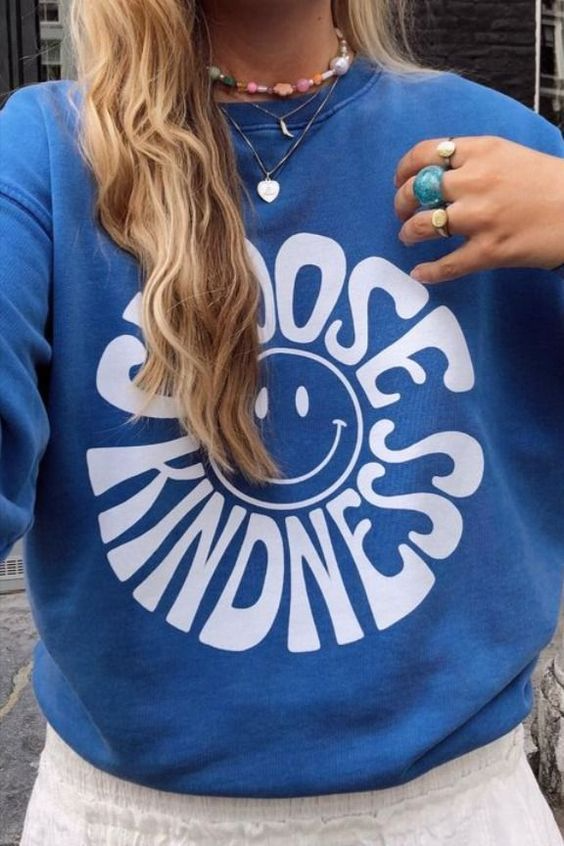Currently Empty: $0.00

Introduction
T-shirts, once considered basic undergarments, have evolved into a global symbol of style, identity, and comfort. Today, they are an essential part of everyone’s wardrobe. Whether they are plain or adorned with colorful prints, logos, or artistic designs, T-shirts are as ubiquitous as they are versatile. This garment has a unique place in history, having transcended its humble beginnings to become a cultural icon. It is not just a fashion statement but a canvas for self-expression and political activism. In this comprehensive exploration, we will dive deep into the origins of the T-shirt, its role in fashion history, its cultural significance, the art of graphic design on T-shirts, and its future in the world of sustainable fashion.
The Origins of the T-Shirt
The T-shirt, in its modern form, can trace its roots back to the late 19th century. The earliest versions of the T-shirt were not designed as standalone garments but rather as undergarments. They emerged in the military, primarily during the Spanish-American War (1898), when soldiers began to wear them under their uniforms as a lighter, more breathable alternative to the thick wool shirts that were common at the time. These shirts were often made from cotton or wool and were used primarily for comfort and practicality.
In the early 20th century, the T-shirt continued to be used by workers and military personnel, but it was still viewed as an undergarment and not suitable for public wear. That perception started to change in the 1920s, when manufacturers began to produce T-shirts as stand-alone garments for everyday use. The T-shirt as we know it began to take shape in the 1930s when the U.S. Navy began to issue white cotton T-shirts as part of its standard issue uniform. These were comfortable and well-suited for the warm weather in places like the Philippines and Hawaii, where soldiers were stationed.
The T-Shirt’s Role in Pop Culture
The T-shirt began to shift in significance as it gained popularity beyond the military. By the 1950s, Hollywood stars such as Marlon Brando and James Dean helped turn the T-shirt into a symbol of rebellion and youthful independence. Brando’s portrayal of Stanley Kowalski in A Streetcar Named Desire (1951) featured him wearing a plain white T-shirt. His look was emulated by young men across the United States, and the T-shirt, which had once been relegated to a functional undergarment, suddenly became a symbol of masculinity and defiance.
James Dean, in the film Rebel Without a Cause (1955), further cemented the T-shirt’s place in pop culture. Dean’s portrayal of the troubled teenager, wearing a simple T-shirt and jeans, resonated with young people across the globe, reinforcing the idea that T-shirts were not just for workers or soldiers, but for anyone who embraced individuality and freedom.
This cultural shift continued into the 1960s and 1970s, when counterculture movements embraced the T-shirt as a way to express political views, musical tastes, and personal beliefs. T-shirts featuring slogans and logos became a medium for self-expression, particularly among youth involved in the civil rights, anti-war, and feminist movements. As a result, the T-shirt gained an identity as a tool for political activism and rebellion.
The Rise of Graphic T-Shirts
The 1960s also saw the explosion of graphic design in the fashion industry. With the increasing use of printing technology, T-shirts became a blank canvas for bold designs, witty slogans, and political messages. Brands and artists began to experiment with T-shirt design, and iconic images, such as Andy Warhol’s famous Campbell’s soup can, were transferred onto T-shirts. As a result, T-shirts transitioned from plain garments to a form of wearable art.
By the 1970s, T-shirts had become an essential part of youth culture. This was the era of rock and roll, and music lovers started wearing T-shirts featuring their favorite bands. Bands like The Beatles, The Rolling Stones, and Pink Floyd saw their logos and album covers printed on T-shirts, which became an extension of fan culture. These T-shirts were not just items of clothing; they were symbols of identity, representing a connection between the wearer and the artists they admired.
The 1980s saw T-shirts becoming even more mainstream, thanks to the rise of hip-hop culture, skateboarding, and punk rock. Graphic T-shirts, adorned with logos, symbols, and bold patterns, were embraced by the youth of these subcultures. The rebellious attitude of the punk movement, in particular, found a perfect medium in the T-shirt. Punk bands and independent clothing designers used T-shirts as a platform to communicate their anti-establishment messages, making T-shirts an important part of the fashion landscape.
The Influence of T-Shirts in Fashion
As T-shirts continued to grow in popularity, they began to be embraced by the fashion industry at large. Designers started to incorporate T-shirts into their collections, experimenting with cuts, fabrics, and embellishments to create innovative new designs. By the late 1980s and early 1990s, high-end designers such as Jean-Paul Gaultier and Vivienne Westwood began to feature T-shirts in their runway shows. These designers elevated the T-shirt from a casual garment to an item of high fashion, cementing its place in the world of luxury fashion.
In the 1990s, the proliferation of graphic T-shirts took on a new dimension with the rise of streetwear culture. Brands like Supreme, Stüssy, and Bape introduced bold, limited-edition T-shirts that became highly coveted by fashion-conscious youth. These T-shirts, often featuring iconic logos or pop culture references, became symbols of exclusivity and status. The concept of “limited-edition” T-shirts further fueled demand, as fans rushed to purchase these unique items before they sold out.
The 2000s and beyond saw an even more widespread adoption of T-shirts in high fashion. Celebrities and influencers have played a key role in popularizing graphic T-shirts, often wearing them with luxury accessories to create a juxtaposition of casual and upscale fashion. The modern T-shirt continues to evolve, with designers like Virgil Abloh and Alexander Wang incorporating T-shirts into their collections as statements of cool, urban style.
T-Shirts as a Medium for Political and Social Expression
T-shirts have long been a tool for political expression. In the 1960s and 1970s, T-shirts became a powerful way to display one’s political beliefs. Protestors used T-shirts to promote civil rights, advocate for gender equality, and speak out against war. For example, the iconic “Make Love Not War” slogan, which became a symbol of the anti-Vietnam War movement, was often printed on T-shirts. The T-shirt thus became more than just an article of clothing; it became a canvas for activism.
The 1980s and 1990s saw a new wave of political T-shirts, often associated with social movements and grassroots organizations. In the era of AIDS awareness, for example, T-shirts featuring slogans like “Silence=Death” were widely worn by activists fighting for recognition and resources for those affected by the epidemic. Similarly, in the 21st century, T-shirts have been used to express support for various causes, including environmental sustainability, racial equality, and LGBTQ+ rights.
In recent years, the political T-shirt has regained prominence with the rise of movements like Black Lives Matter and environmental campaigns. T-shirts emblazoned with powerful messages or images—such as the “I Can’t Breathe” slogan—have become tools for individuals to express solidarity with causes and demand social change.
The Environmental Impact and Sustainability of T-Shirts
As the demand for fast fashion grows, the environmental impact of T-shirt production has become an important issue. Traditional T-shirt manufacturing processes involve the use of large amounts of water, chemicals, and non-renewable resources. The cotton industry, for example, is notorious for its heavy use of pesticides and fertilizers, which can have devastating effects on the environment.
However, in recent years, there has been a growing movement toward sustainable fashion. Brands like Patagonia, Everlane, and Reformation have pioneered the use of organic cotton, recycled materials, and eco-friendly dyes in their T-shirt production. The use of sustainable fabrics, such as hemp or bamboo, has also become more popular as consumers demand eco-friendly alternatives.
Additionally, many brands are now focused on ethical labor practices. Fair-trade certifications ensure that the workers who produce T-shirts are paid fairly and work in safe conditions. The growing demand for sustainable fashion has led to increased transparency in the fashion industry, with consumers being more conscious of the environmental and social implications of their clothing choices.
Conclusion
From its modest beginnings as an undergarment to its current status as a cultural and fashion icon, the T-shirt has undergone a remarkable transformation. It has become a symbol of individuality, rebellion, and political expression. Whether worn to make a statement, express creativity, or simply for comfort, the T-shirt continues to be an enduring part of the global fashion landscape.
As we look to the future, the T-shirt is likely to continue its evolution. New printing techniques, sustainable materials, and innovative designs will continue to shape the T-shirt’s role in fashion. But no matter how it changes, the T-shirt will remain a powerful tool for personal expression, a symbol of social change, and a testament to the adaptability of fashion.
This expanded version provides a more comprehensive look at the history, cultural impact, and future of T-shirts. Let me know if you would like to delve deeper into any specific section or add even more detail!

